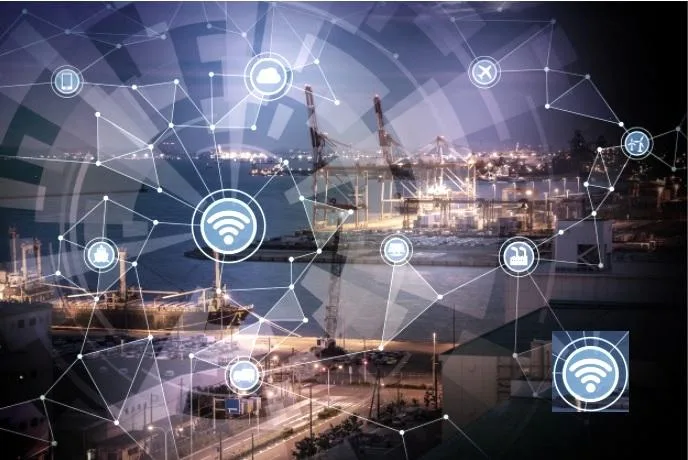To operate safe and efficient mine sites, the mining industry relies heavily on micro data centre technology at the edge
The transformation of traditional mines into Smart Mines has been rapid. They use information, autonomy and technology to improve safety, reduce operational cost, track employees and equipment better, increase maintenance and boost productivity.
We’re on the brink of a revolution. But it’s not going to arrive with a bang. Instead, the wave of new tech that’s set to change the human landscape is going to creep up on us until, bam! It’ll be upon us – much in the same way that the mobile phone and the internet suddenly became wholly integrated into our lives.
Enter the micro data centre – something that few have yet to hear about but that’s set to have an impact on all of our lives.
While it is easy to see the advantages of using new technologies to manage efficient mine sites, innovation can also bring new challenges.
- IIoT – The Industrial Internet of Things (IIoT) connects all the heavy machines, vehicles, equipment and devices.
- Monitoring devices – Mining workers have monitoring devices with access to critical real-time information regarding operations
- Drones – Drones provide real-time aerial footage of mine sites for maintenance, monitoring, mapping, safety etc.
- Autonomous vehicles – Autonomous vehicles at mine sites connect to managing software in real-time.
- Audit trail and tracking – Activities and incidents are required to be recorded in real-time for safety and auditing purposes
- 3D imaging – 3D imaging of ore deposits assists to understand the geology for increasingly efficient and waste less mining.
- Machine learning – Machine learning and data optimisation are valuable to operations and save time and money.
- 3D printing – 3D printing increases efficiency and flexibility by producing on-demand replacement parts and repairs.
What is a Micro Data Centre?
To understand what a micro data centre is, we first need to explain another new concept – that of edge computing. This is where the storage of data is brought close to the source. Quite simply, it’s located at ‘the edge’.
The main advantage of edge computing is that data doesn’t have to travel great distances to a central storage location. This makes for a speedier transfer – something that’s ever more in demand with our desire for instant activity at our fingertips as well as advancing real-time tech needs in areas, such as self-driving cars.
A micro data centre is, as the name suggests, a smaller tool in which to store data. This is the answer to edge computer data storage. It allows fluidity of the flow of data, removing the latency of bandwidth hungry applications thanks to the short distance of travel. A single unit is typically 50 KW to 400 KW in size – roughly the size of a refrigerator.
Users aren’t restricted to a single micro data centre. They can be scaled according to requirements. Plus they can be used in the most inhospitable locations – both environmentally and location-wise.
The best are wholly self-contained units, resistant to dust and dirt, and require only a simple cooling system as opposed to a whole room setup under constant temperature constraints.
However, micro data centres have yet to take the world by storm. The expected explosion (by some) in popularity has not materialised. In fact, the new technology has not so much entered the world with a bang – more with a barely heard whimper.
So why is this?
The reasons are likely to be multiple.
The Delay in 5G Rollout and Associated Edge Demand
5G – or the lack of it – is surely a reason that micro data centres have yet to enter the spotlight. It seems somewhat ironic that a technology that’s set to provide speed and the ability to connect virtually everything is taking so long to put in place. But revolutionary technology never happens overnight.
From its 2008 conception in South Korea through to Samsung’s 2013 announcement that it had created a 5G network, this was never going to be a quick unveiling.
The tech gradually sped up, with partnerships around the world driving the trend. Huawei was a leading light, along with other technological giants.
And then… COVID hit.
This has undoubtedly caused an extensive delay in the creation of a 5G infrastructure. However, this is hopefully now less of an issue as work around the globe once again recommences.
There’s also been the hesitancy for organisations to embrace edge technology. Pre-COVID, a handful of industries viewed the invention with glee. Healthcare, mining, oil & gas, and utility companies all watched closely. But there was no clamour to place initial orders.
It appears that companies are playing the waiting game for many reasons:
- Do they actually require a local micro data centre?
- Will the increase in IoT (Internet of Things) create as much data as we expect?
- Will 5G take up a lot of the slack regarding data transfer?
- For applications that create excessive data, will this be better served by a content distribution network at the regional edge, as opposed to right at the edge?
Then there’s the concerns surrounding costs and organisation.
- Security issues
- Where to locate them
- Support and maintenance
- Management
- Whether to own micro data centres outright or to outsource
Technology in its Infancy
While demand is, so far, tentative, the uptake of micro data centres is likely to increase in a snowball manner. This is mainly due to the lag in the associated technology – led by the lack of 5G.
Those currently using micro data centres include remote locations, companies who need to upgrade expensive server rooms and those who want to take advantage of the security and easy access provided by them.
The technology of the data centres themselves is also evolving, with assets boasting switchable AC-DC power, different types of cooling, running on lithium-ion batteries and a plethora of different sizes.
Challenges of the Edge
Edge computing is fast, secure, and without latency. This is crucial for Smart Mines’ smooth operation, especially for autonomous vehicles. Any delay in data processing can most likely lead to accidents.
On-site data processing is the best option if you don’t have the budget to lose even one millisecond.
To ensure safe and efficient operations of mine sites, the mining industry relies more heavily on technology. Smart Mines, which use information, autonomy and technology to improve safety, reduce operational cost, track employees and equipment better, increase maintenance and boost productivity, are rapidly replacing traditional mines.
It is easy to see the advantages of using new technologies to manage efficient mine sites. Innovation comes with new challenges.
Smart Mines generate large amount of data 24 hours a day that must be stored and processed locally.







